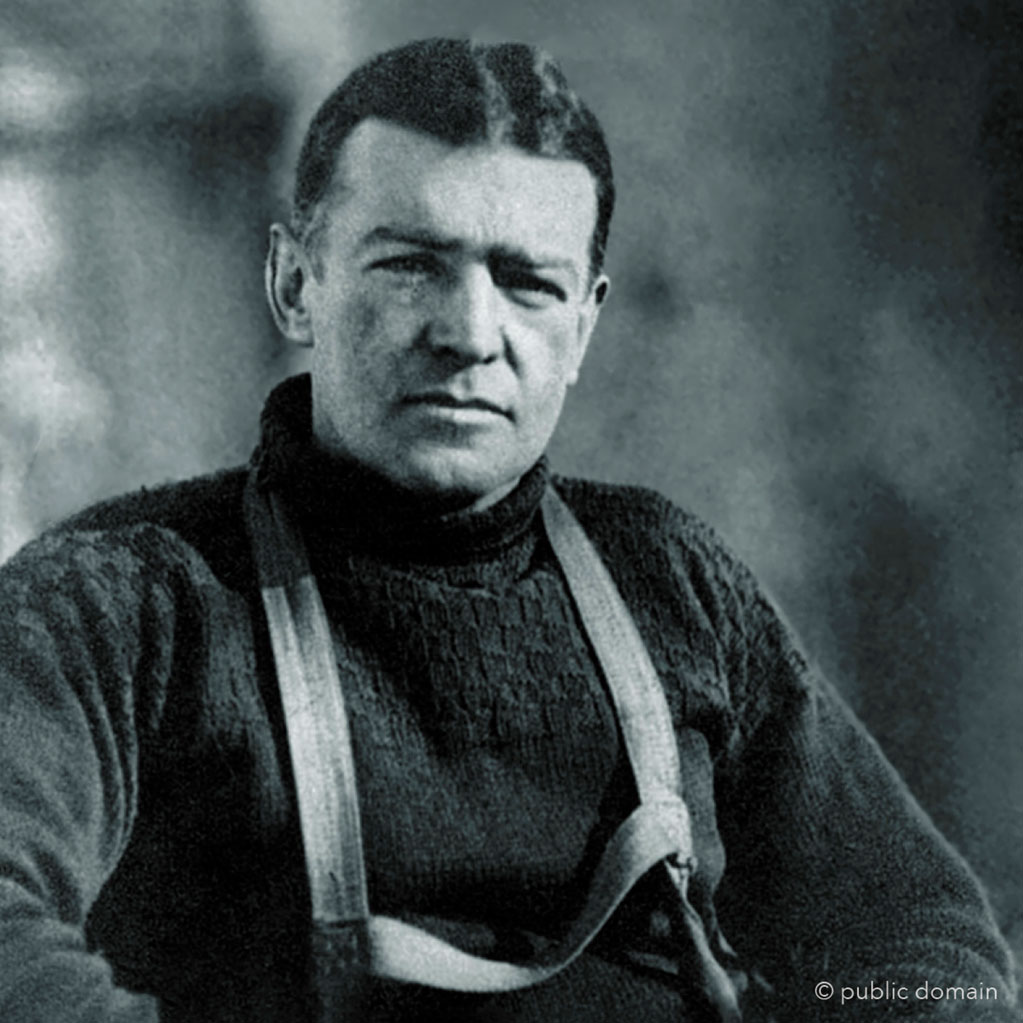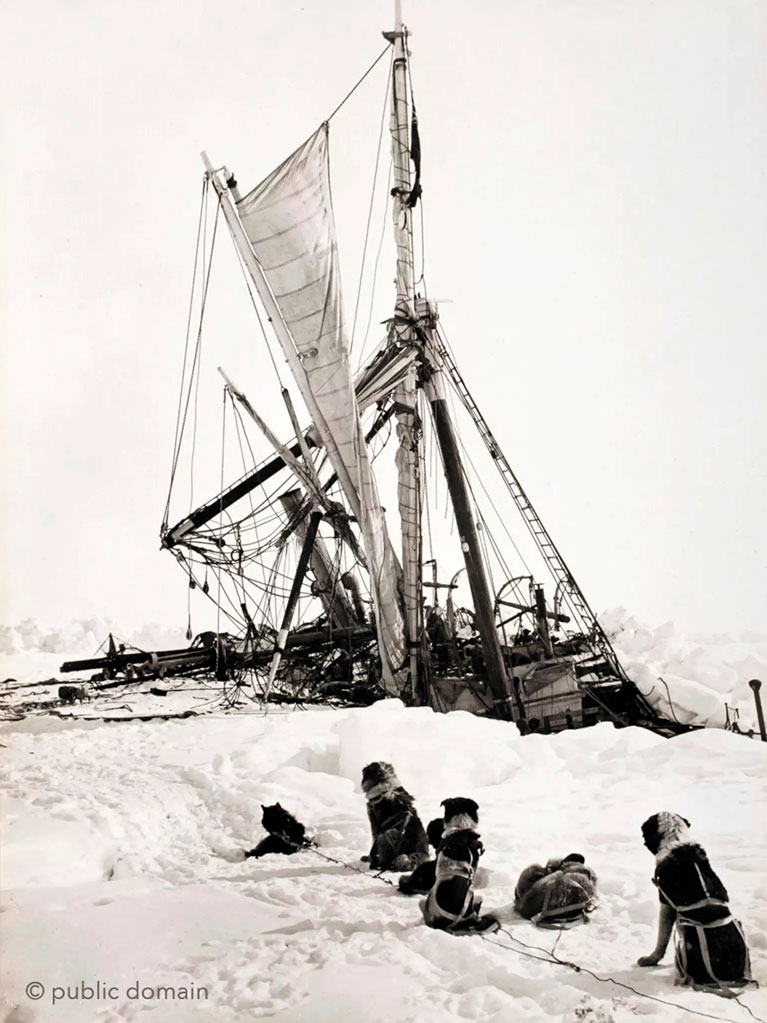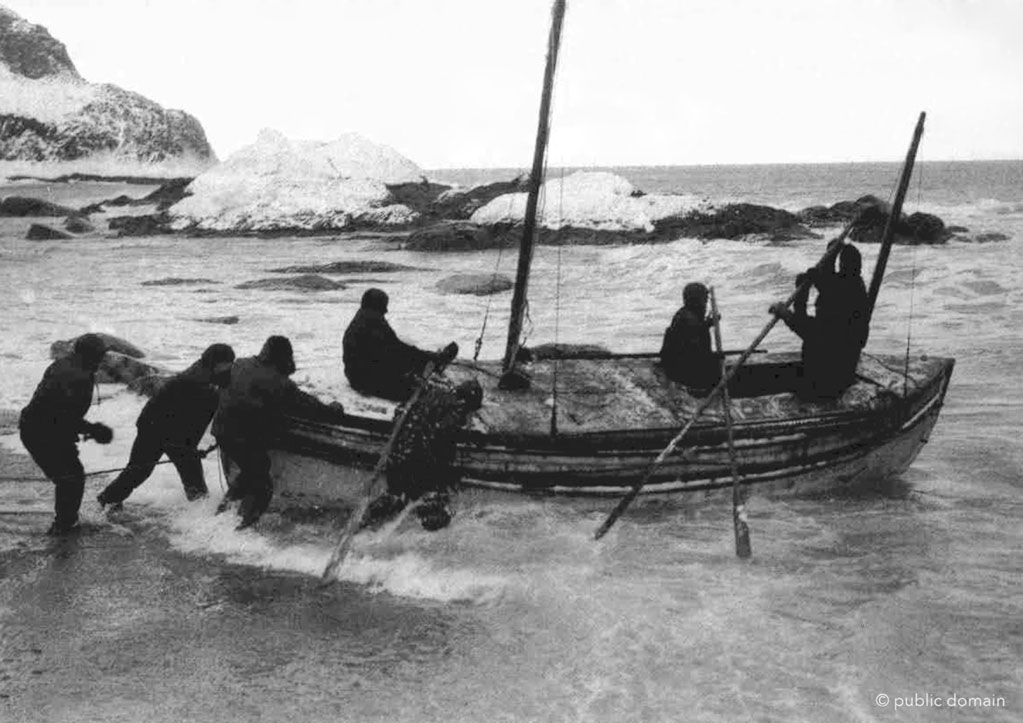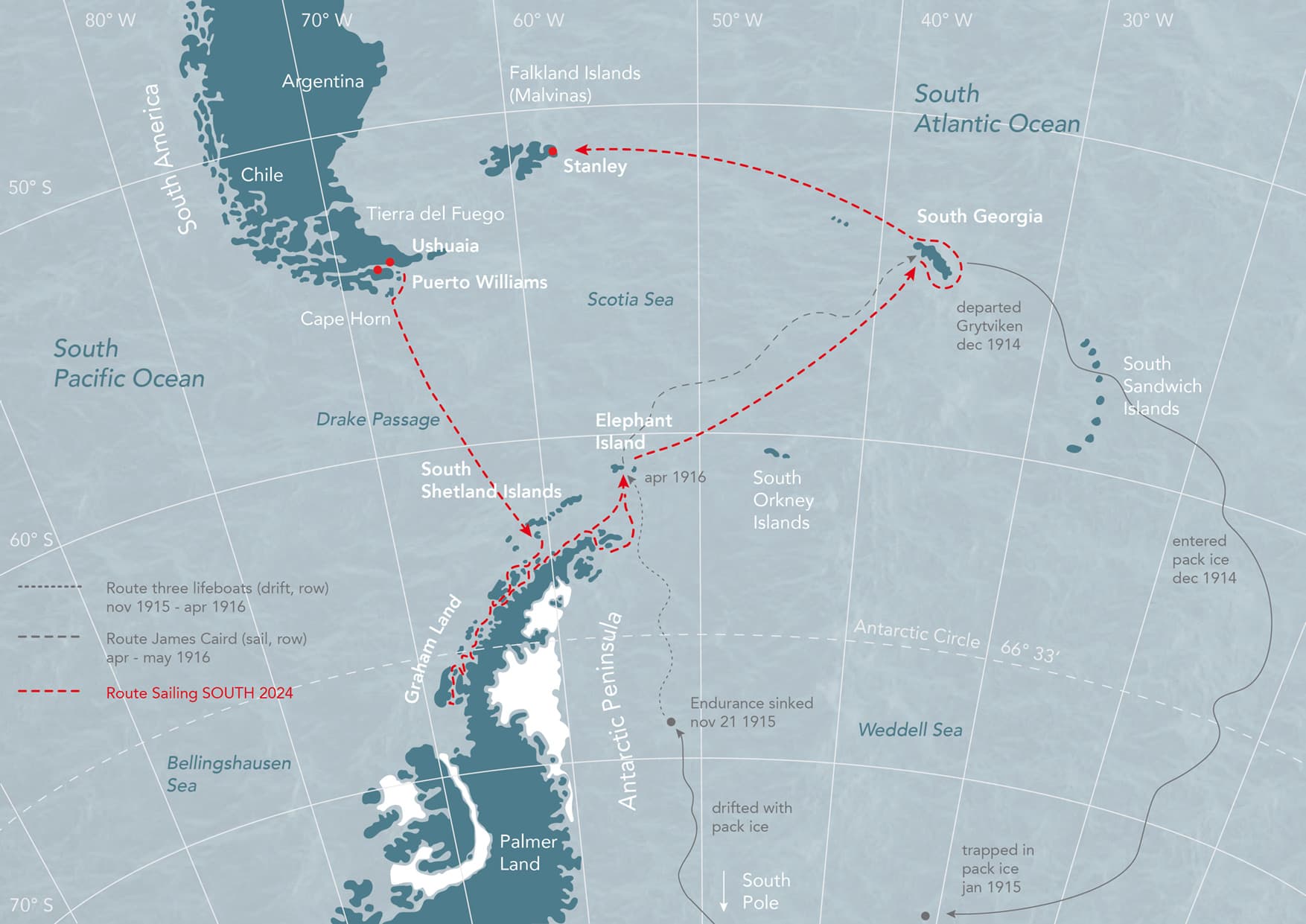The “Imperial Trans-Antarctic Expedition” (1914-1917)
In 1913, Sir Ernest Shackleton, looking for suitable men for the crew of his expedition to cross the Antarctic, advertised in the London „Times“:
„Men wanted for hazardous journey, small wages, bitter cold, long months of complete darkness, constant danger, safe return doubtful, honour and recognition in case of success.“
Despite this honest and unembellished perspective, the number of applicants (5,000) far exceeded that of the required crew (56 on two ships).
However, the expedition failed before it even began: Shackleton‘s ship, the Endurance, was trapped in the ice and sank, but the „Boss“, as his men respectfully called him, with one of the most incredible rescue operations in polar history made sure that all of them returned alive.


The “Imperial Trans-Antarctic Expedition”, which had nothing less than crossing the Antarctic continent as its goal, was doomed to failure shortly after its start in South Georgia in December 1914.
Early on, drift ice in the Weddell Sea hindered the journey southwards, and by January 1915 the ship, the Endurance, was completely encased in ice. It drifted through the polar winter trapped in the ice for several months, but was unable to withstand the pressure of the masses of ice breaking up and drifting in the spring, was abandoned in October 1915 and sank, crushed by the ice, in front of Shackleton and his men on 21 November 1915.
After months in a camp on the broken, drifting and melting ice, it broke completely under their feet at the end of the summer in April 1916. Shackleton decided to head for the nearest land across open water with the three lifeboats he had been carrying up to that point.
After five days of rowing through the icy and stormy Weddell Sea, the 28 men reached Elephant Island exhausted and had solid ground under their feet again for the first time after 497 days at sea and sea ice.
Elephant Island, that tiny, remote island – today, as then, lying off any known shipping route in the Southern Ocean – barren, rough, almost completely glaciated except for a narrow strip of rock on the beach and mercilessly exposed to wind and weather, offered the crew of the Endurance no protection and no prospect of rescue from the outside.
And so Shackleton decided to set off again to get help. With five other men, including Frank Worsley as navigator, he wanted to try to reach the manned whaling stations on South Georgia, over 800 nautical miles away, in one of the open lifeboats.
At the end of April 1916, six of them set sail on the James Caird, which had been reinforced and converted by the ship’s carpenter for this daring crossing. The remaining 22 men stayed behind on Elephant Island under the care of Frank Wild and had to endure a further four months of hardship until their rescue, which they could hardly hope for at the time.

It took Shackleton and his crew 15 days to make the dangerous and rough passage through the storm-tossed South Atlantic before they actually reached the coast of South Georgia thanks to the navigational skills of Frank Worsley, albeit on the “wrong”, deserted southern side of the island and with a boat that was no longer seaworthy. The exhausted men went ashore in King Haakon Bay.
After a few days of recuperation, they had no choice but to attempt to cross the island, consisting largely of glaciated mountains up to 3,000 metres high, in completely unmapped terrain on a route that had never been travelled before and without any adequate equipment, if they did not want to give up on saving themselves and their comrades. The risky and daring undertaking succeeded, and miraculously they reached the whaling station in Stromness on 20 May 1916 after 36 hours of uninterrupted walking with their last ounce of strength.
From there, Shackleton finally managed – after three unsuccessful attempts – to rescue all the remaining expedition members from Elephant Island at the end of August 1916 and take them safely on board the Yelcho, a Chilean navy guard boat.
“South” is the title of the book that Shackleton wrote about the Imperial Trans-Antarctic Expedition.
It is also reflected in the name of our expedition “Sailing SOUTH 2024“.
110 years after the Endurance, on the 150th birthday of the “Boss”, we set off and follow in part of his footsteps.
